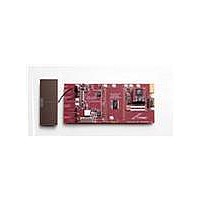CBC-EVAL-09 Cymbet Corporation, CBC-EVAL-09 Datasheet - Page 11

CBC-EVAL-09
Manufacturer Part Number
CBC-EVAL-09
Description
ENERCHIP EP ENERGY HARVEST EVAL
Manufacturer
Cymbet Corporation
Series
EnerChip™r
Type
Energy Harvestingr
Datasheet
1.CBC-EVAL-09.pdf
(14 pages)
Specifications of CBC-EVAL-09
Main Purpose
Power Management, Energy Harvesting
Embedded
No
Utilized Ic / Part
CBC915-ACA, CBC51100
Primary Attributes
EM/RF, Solar, Thermal, Vibration Energy Processor
Maximum Operating Temperature
+ 70 C
Product
Power Management Development Tools
For Use With/related Products
EnerChip CBC51100
Lead Free Status / RoHS Status
Lead free / RoHS Compliant
Secondary Attributes
-
Lead Free Status / Rohs Status
Lead free / RoHS Compliant
Other names
859-1013
Available stocks
Company
Part Number
Manufacturer
Quantity
Price
Company:
Part Number:
CBC-EVAL-09
Manufacturer:
Cymbet
Quantity:
135
CBC-EVAL-09 EnerChip EP Universal EH Eval Kit
Pulse Discharge Current for a Wireless End Device
Pulse discharge currents place special demands on batteries. Repeated delivery of pulse currents exceeding
the recommended load current of a given chemistry will diminish the useful life of the cell. The effects can be
severe, depending on the amplitude of the current and the particular cell chemistry and construction. Pulse
currents of tens of milliAmperes are common in wireless sensor systems during transmit and receive modes.
Moreover, the internal impedance of the cell often results in an internal voltage drop that precludes the cell
from delivering the pulse current at the voltage necessary to operate the external circuit.
This important issue is covered in Cymbet Applications note AN-1025 available on cymbet.com.
Battery Protection
The EVAL-09 board contains a low battery cutoff circuit that prevents the EnerChips on the CBC51100 module
from being completely discharged - a condition that would permanently damage the battery. The cutoff circuit
places a parasitic 400nA load on the battery - a load that would discharge the two EnerChips in approximately
125 hours, or just over 5 days. If the EnerChips are allowed to reach the cutoff voltage at such low discharge
currents, their specified cycle life will be reached after a few hundred of such deep discharge cycles. To
avoid this condition and extend the service life of the EnerChip, it is advisable to program the MCU to count
transmission cycles or elapsed time to determine when the EnerChips’ state-of-charge is approximately 50%,
at which time the MCU would force itself or another system circuit element to briefly draw high power from the
CBC-EVAL-09, forcing the CBC-EVAL-09 circuit into a cutoff mode and thereby disconnecting the EnerChips from
the circuit. Drawing a brief burst of a few milliamperes from the CBC-EVAL-09 will force the cutoff condition
to occur within a few seconds. This will ensure that the charge/discharge cycle life of the EnerChips will be
greater than 5000, as rated. To calculate the number of hours the EnerChips are capable of supplying energy
to the load, add the cutoff current to the average load current drawn by the system and divide the sum into
the combined 100µAh capacity of the two EnerChips. The quotient is the number of hours until the EnerChip is
totally depleted. Divide that number in half to reach the 50% depth-of-discharge time.
Guidelines for Attaching Other Energy Harvesting Transducers
Other energy harvesting transducers (e.g., inductive, piezoelectric, thermoelectric) may be attached to the CBC-
EVAL-09. As configured, the CBC-EVAL-09 will operate with many other transducer types. However, performance
specifications of these other transducers - namely output impedance - will affect the power conversion
efficiency of the CBC-EVAL-09 kit as designed. Please contact Cymbet Applications Engineering at the phone
number shown below to discuss your specific application and desired alternate transducer(s).
System Level Considerations when Using a Low Power Energy Harvester
The EVAL-09 is capable of supplying 10s to 100s of µW of continuous power to the load. Most applications
operating with radios and microcontrollers typically need 10s to 100s of mW of power under peak load
conditions. The disparity between what is available and what is needed can be made up by limiting the
amount of time the load is powered and waiting sufficient time for the energy harvester to replenish the energy
storage device before the subsequent operation commences. In typical remote RF sensor applications, the
‘on’ time will be on the order of 5-20ms, with an ‘off’ time of several seconds to several hours depending on
the application and available energy source. The duty cycle is an important consideration when designing a
wireless system. While it is relatively straightforward to calculate a power budget and design a system to work
within the constraints of the power and energy available, it is easy to overlook the power required to initialize
the system to a known state and to complete the radio link with the host system or peer nodes in a mesh
network. The initialization phase can sometimes take two to three times the power needed for steady state
operation.
Ideally, the hardware should be in a low power state when the system power-on reset is in its active state. If
this is not possible, the microcontroller should place the hardware in a low power state as soon as possible.
After this is done, the microcontroller should be put into a sleep state long enough for the energy harvester
©2011 Cymbet Corporation • Tel: +1-763-633-1780 • www.cymbet.com
DS-72-13 Rev A
Page 11 of 14











